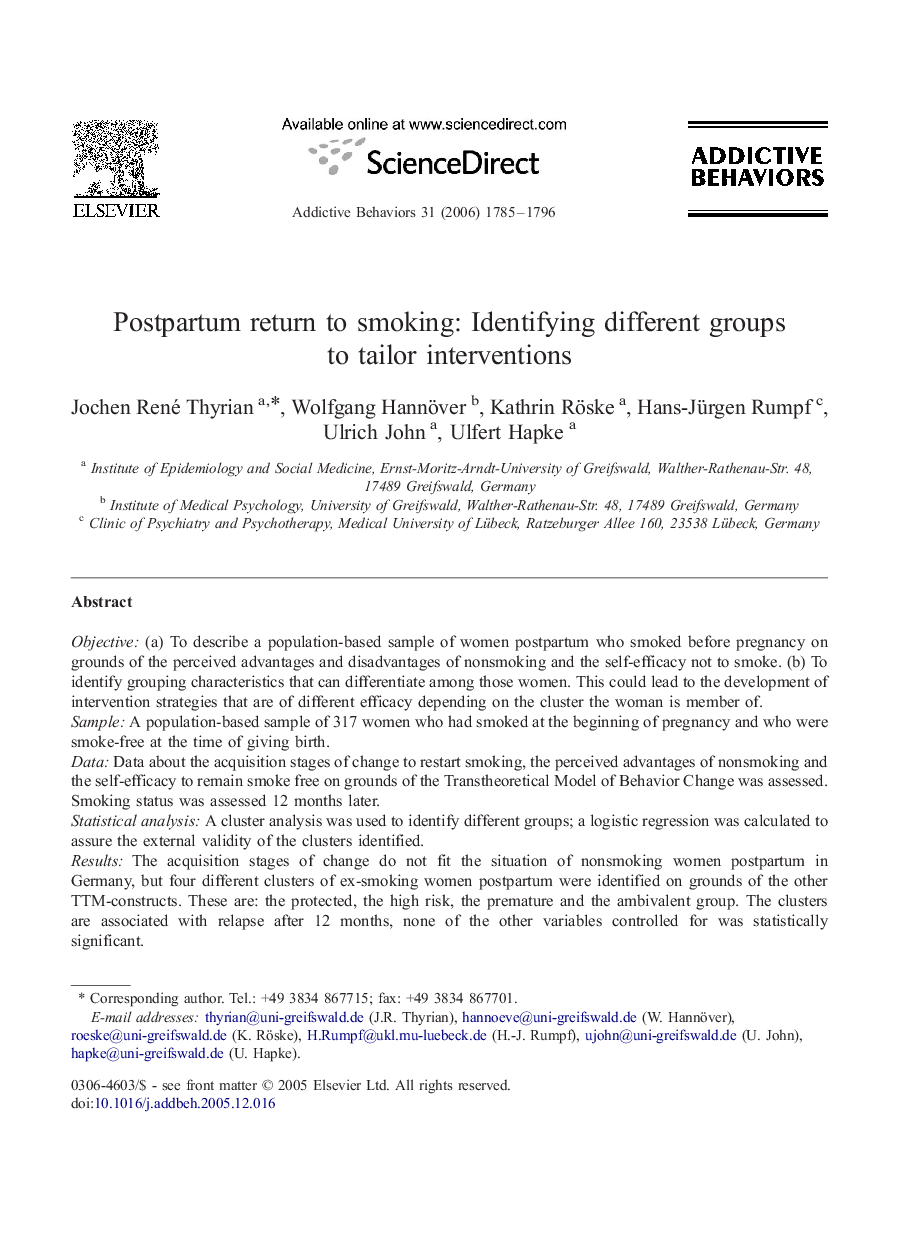| کد مقاله | کد نشریه | سال انتشار | مقاله انگلیسی | نسخه تمام متن |
|---|---|---|---|---|
| 900661 | 915475 | 2006 | 12 صفحه PDF | دانلود رایگان |

Objective(a) To describe a population-based sample of women postpartum who smoked before pregnancy on grounds of the perceived advantages and disadvantages of nonsmoking and the self-efficacy not to smoke. (b) To identify grouping characteristics that can differentiate among those women. This could lead to the development of intervention strategies that are of different efficacy depending on the cluster the woman is member of.SampleA population-based sample of 317 women who had smoked at the beginning of pregnancy and who were smoke-free at the time of giving birth.DataData about the acquisition stages of change to restart smoking, the perceived advantages of nonsmoking and the self-efficacy to remain smoke free on grounds of the Transtheoretical Model of Behavior Change was assessed. Smoking status was assessed 12 months later.Statistical analysisA cluster analysis was used to identify different groups; a logistic regression was calculated to assure the external validity of the clusters identified.ResultsThe acquisition stages of change do not fit the situation of nonsmoking women postpartum in Germany, but four different clusters of ex-smoking women postpartum were identified on grounds of the other TTM-constructs. These are: the protected, the high risk, the premature and the ambivalent group. The clusters are associated with relapse after 12 months, none of the other variables controlled for was statistically significant.ConclusionsThe TTM contributes to a better understanding of nonsmoking women postpartum. Further studies have to replicate the clusters found and have to find whether interventions tailored to these clusters are more effective in preventing relapse than other interventions.
Journal: Addictive Behaviors - Volume 31, Issue 10, October 2006, Pages 1785–1796